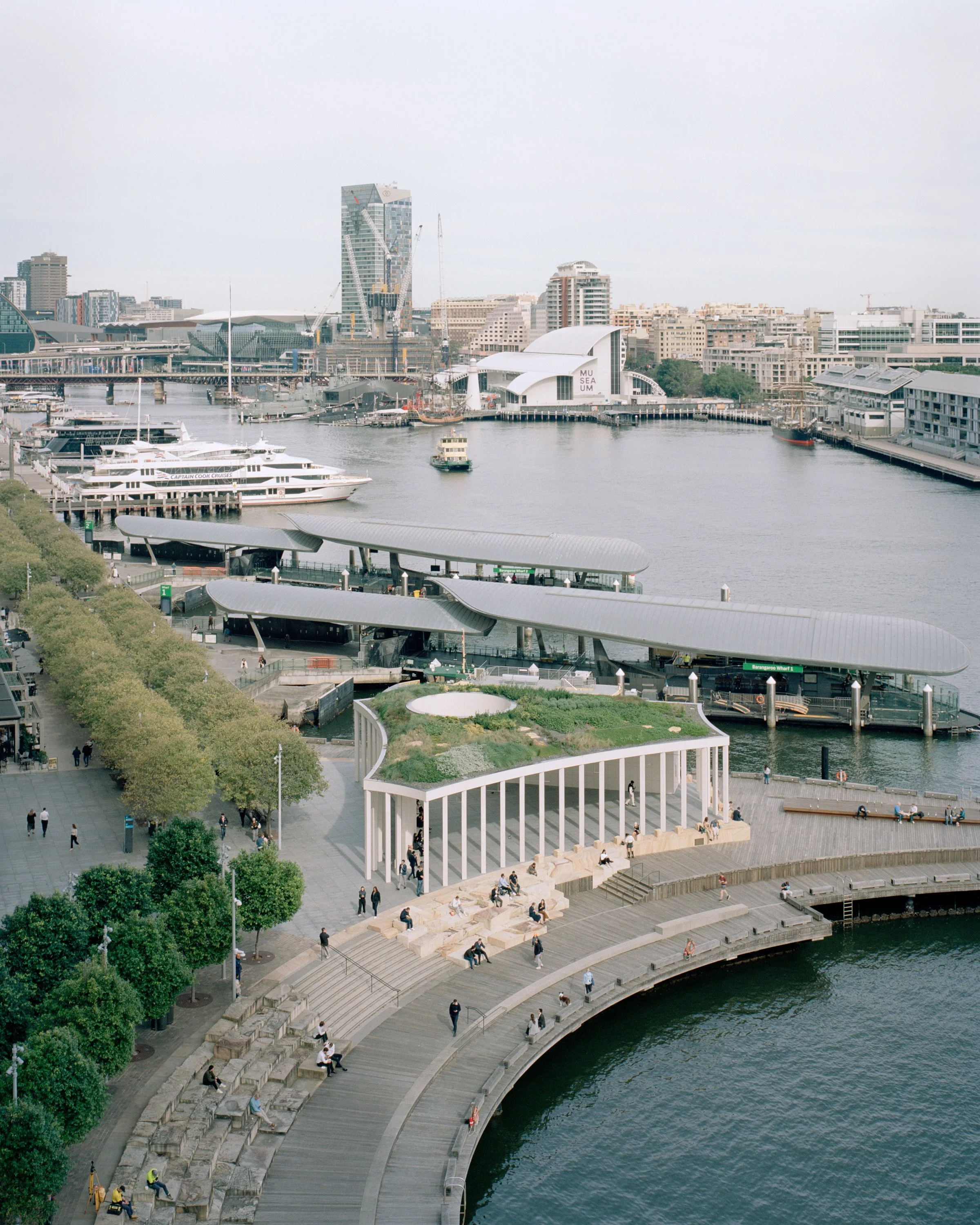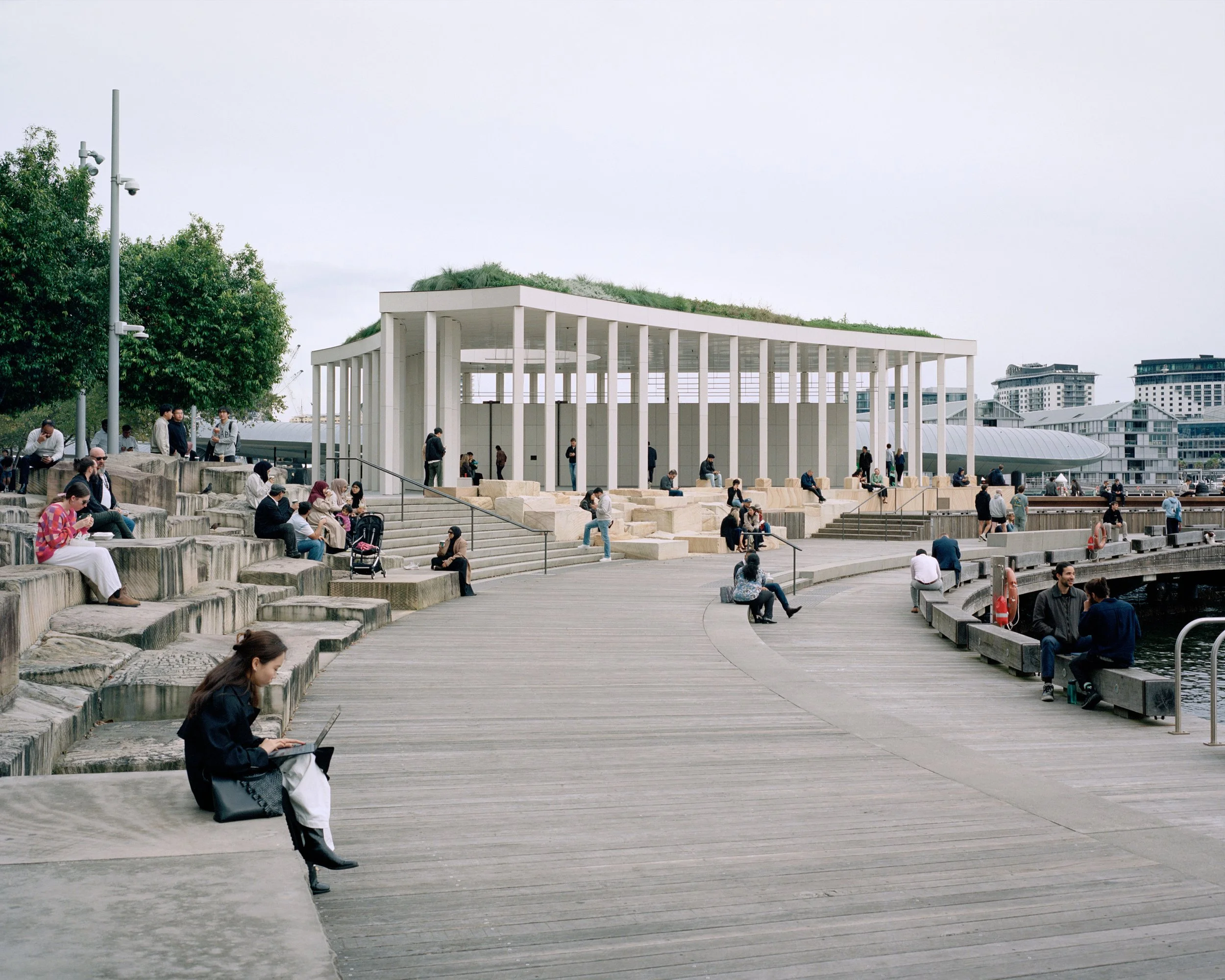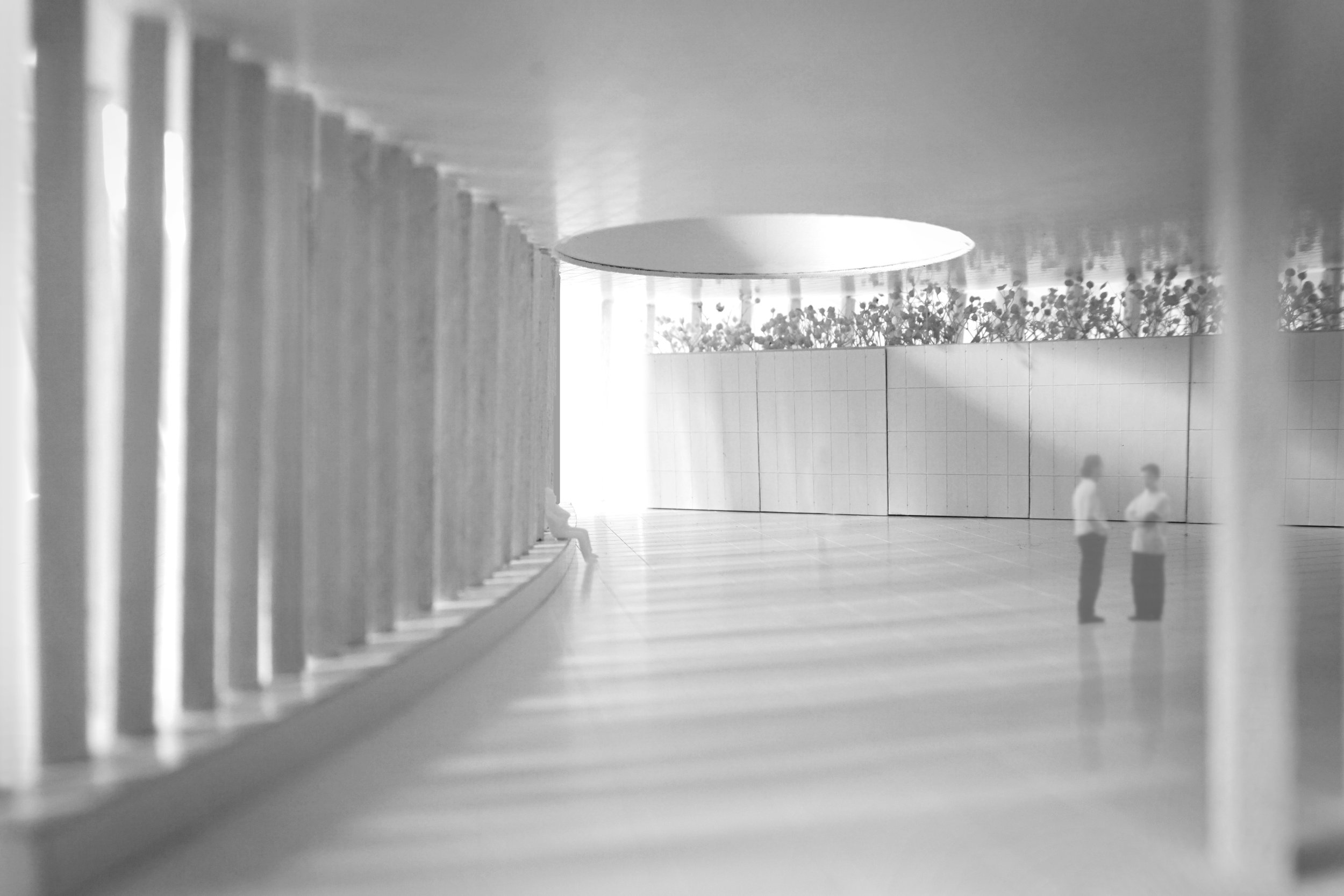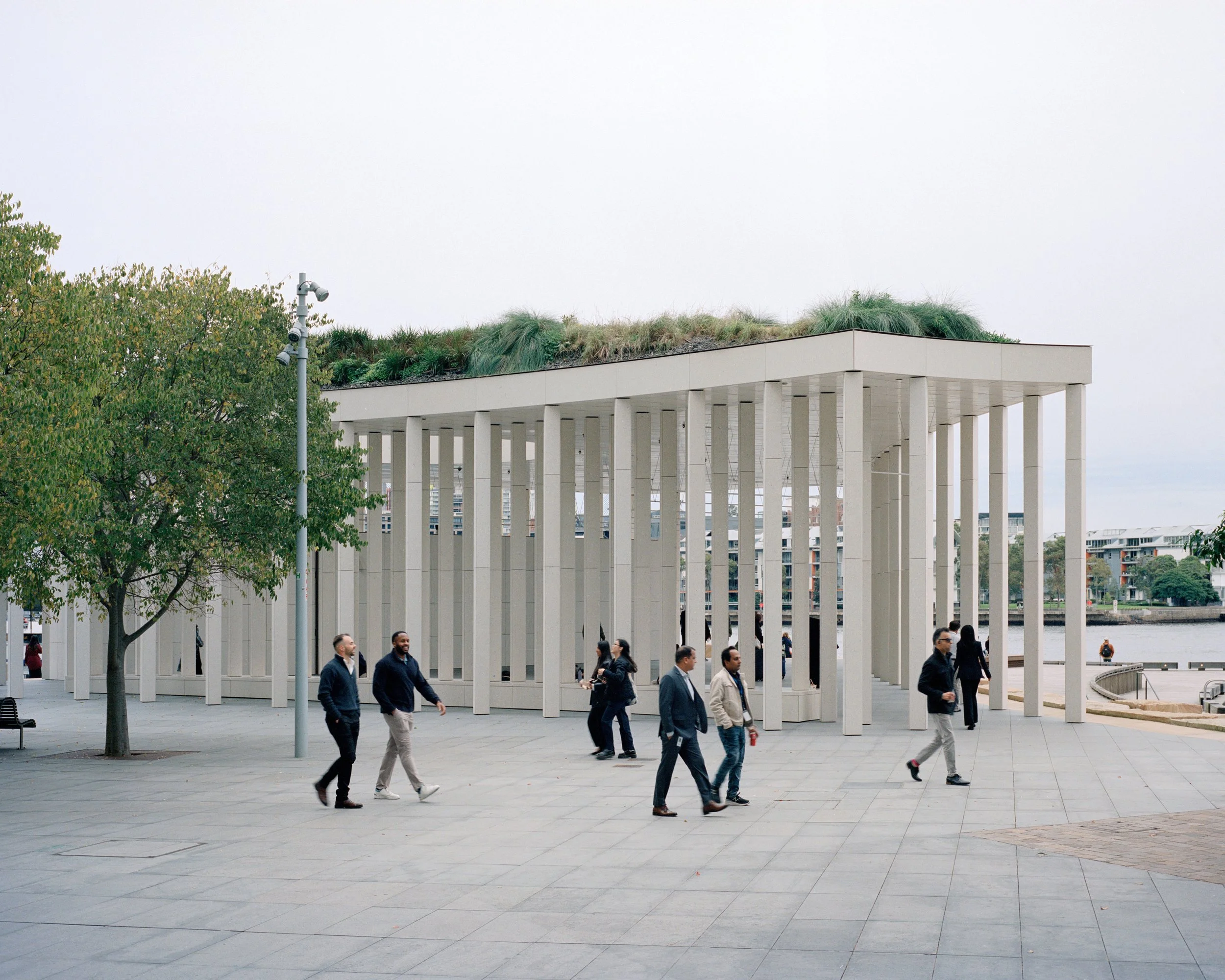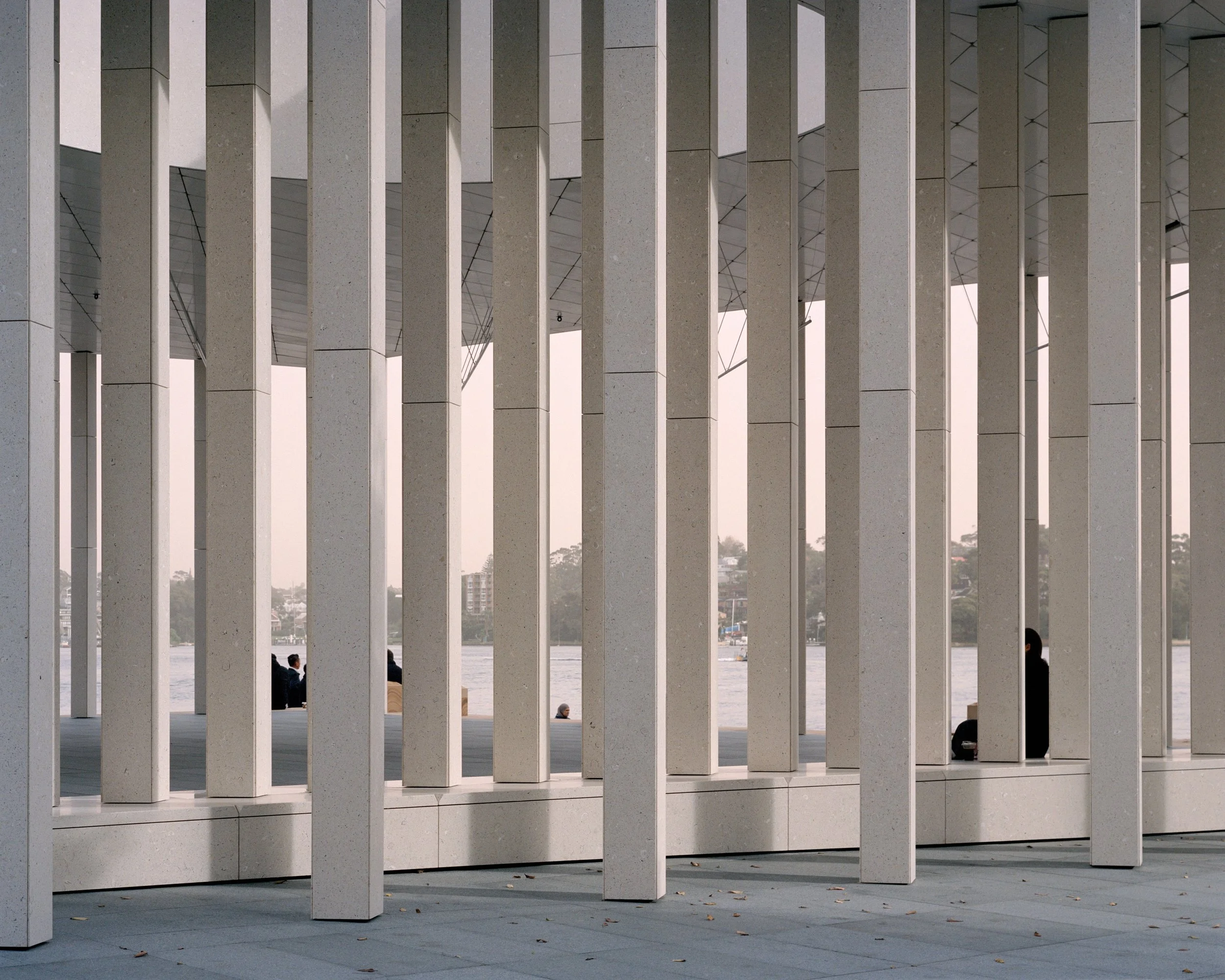Pier Pavilion
Sydney, Australia
2020-25Won in national competition, the Pier Pavilion is a new permanent civic pavilion on Sydney Harbour.
The building functions as a host for special events and as a place of public repose, to take in harbour views and enjoy the public realm. The site forms part of a wider harbourside regeneration effort focussing on the western edge of Sydney’s city centre in Barangaroo. The Pier Pavilion references land, sea and sky through its various formal and material components.
The plan responds to the geometry of coves and peninsulas which characterises Sydney Harbour. A complex play of columns supports a landscape roof and variously screens and modulates internal and external spaces. A circle of light from a large roof oculus roams across the ground and double colonnade, balancing internal and external daylighting. Inside the building is a long, freestanding volume housing a servery with bar, store and technical area supporting events in the Pavilion.
The envelope of the Pier Pavilion is made of “oyster terrazzo”, a material specially formulated for the project by Besley & Spresser combining whole Sydney Rock Oyster shells with a variety of recycled aggregates. A year in mix experimentation and testing, the resultant material when honed expresses the distinctive and variegated forms of the shell across its face. The oyster terrazzo material ties the building to its site where these oysters have flourished for millenia, and connects to long traditions in architecture of materiality and ornament. Over half a million oyster shells were recycled and used in the construction, otherwise committed to landfill.
The structure allows a long free span, with roof trusses resolving around the oculus, supported only at the perimeter by 86 moment-resisting columns. The oyster terrazzo is hung in the manner of stone from the ceiling, columns and fascia. A folding laminated timber deck supports the landscape roof, which consists of endemic planting, sandstone and hollow logs typical of surrounding headlands. Species were sought to attract native insects and birds to create microhabitats. Columns house the building’s service routes, including drainage, electricity and communications in lieu of exposed downpipes and risers.
Infrastructure NSW
NPC
Besley & Spresser
Stephen Edwards
SDA
Ironbridge
Steensen Varming
CJ Arms
Group DLA
Rory Gardiner
Maxime DelvauxClient
Project Manager
Architect & Lead Consultant
Builder
Structural Engineer
Facade Engineer
Lighting, Services
Landscape, Hydraulics
BCA, Access
PhotographyAwards
1st Prize: National Architecture Competition 2020
1st Prize: Concrete Institute of Australia 2025Media
Architecture Australia, 2025
Divisare, 2025
Afasia, 2025
Metalocus, 2025
ArchDaily, 2025
DesignBoom, 2025
Architecture Au, 2025
Sydney Morning Herald, 2025
Concrete Playground, 2025
Architecture Australia “Next Gen”, 2024
Sydney Morning Herald, 2021
Daily Telegraph, 2021
World Architecture, 2021
ArchDaily, 2021
Yellowtrace, 2021
Broadsheet, 2021
InDesignLive, 2021
Architecture and Design, 2021
Concrete Playground, 2021
Architecture Au, 2020
